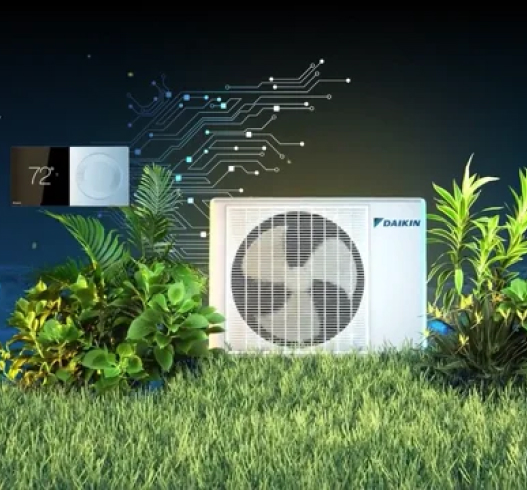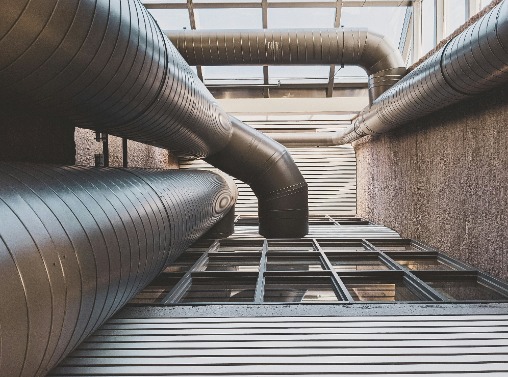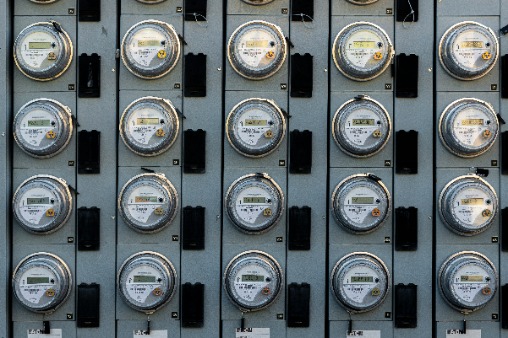Heat Pumps: From Humble Beginnings to a Leading Indoor Comfort Solution

Today’s homeowner is no longer bound by "your father’s heat pump" of the past. Technological advances have turned heat pumps into energy-efficient, high-performance beasts capable of providing satisfying indoor comfort, even in very cold climates1
A key component of a system for cold climate operation is a variable-speed, inverter-driven compressor technology. Today’s heat pumps far eclipse those from just a decade ago when it comes to cold climate performance, energy savings, and even style.
Some of the newest heat pumps now feature an innovative side-discharge design that goes beyond heating and cooling to help homeowners reclaim precious backyard space and livability. With small footprints and big performance, these attractive, compact heat pumps are challenging the traditional indoor comfort solutions. These side-discharge units tie into existing ductwork, take up far less space than traditional “cube” units, and operate quietly.
Heat pumps are also a sustainable option for indoor comfort when compared to fossil fuel systems. When used as a whole-house solution, ENERGY STAR-certified mini-split heat pumps circumvent more than 4,500 lbs. of greenhouse gas emissions on average over their lifespan, compared to traditional air conditioning and heating systems.2
Generational Change
Electric, air-source heat pumps have evolved with the times, reflecting the changing aspirations of homeowners from Boomers to Generation Z. Their growing popularity of today contrasts the historical belief that heat pumps were an unconventional alternative to oil-fueled furnaces.
Before new suburbs lured Baby Boomers (born between 1946-1964) out of cities to buy their first homes, air conditioning was rare and electric heat pumps rarer still. Fewer than 2 percent of homes used electricity as a heat source in 19603, relying instead on fuel such as furnace oil delivered by trucks and pumped into hulking tanks stashed in basements or outside the home. Accidental spills and leaks were not uncommon. These days, less than 5 percent of U.S. homes still rely on oil for heat.4
As suburbs grew, heat pumps became an electric heating option, particularly in places without harsh winters. By 1970, the number of U.S. households relying on electricity for heat grew to more than 5 million homes.5
The 1973 oil embargo changed everything – especially for Generation X (born between 1965 - 1980). When the Organization of Arab Petroleum Exporting Countries (OAPEC) declared an embargo against the U.S. and cut production, oil prices soared. Within three months, oil prices nearly quadrupled.6 No longer flush with cheap energy, the nation reeled. As youngsters, Gen Xers often sat in their parents’ cars for hours lining up to buy costly gasoline. They may have lived in colder homes, heeding government calls to conserve energy by setting thermostats at 65°F for heat. And summer road trips became plodding missions, slowed by a mandatory, nationwide 55 mph speed limit to conserve fuel.
The 1970s oil crisis – coupled with a rising environmental movement – left an indelible mark on Gen Xers, but it also changed how America heated and cooled their homes. As fuel supplies shrank and prices rose, electricity became the prime source for home heating in more than 18 percent of homes by 1980, more than doubling from a decade earlier.7
Initially, high fuel costs drove homeowners to consider electric heat pumps, which back then weren’t particularly energy efficient. But in 1992, the U.S. Department of Energy (DOE) established the nation’s first minimum energy-efficiency standards for residential AC and heat pumps.8 The environmental ethos, embraced by many of my oldest Gen Xers, now demanding more sustainable solutions, had made an impact.
By the time the average Millennial (born between 1981-1994) became teenagers, demand for energy efficiency was mainstream. Still, only a quarter of the U.S. relied on electricity as a heat source.9 That is until 2006, when the DOE significantly elevated minimum energy-efficiency standards for split system heat pumps. By 2010, nearly a third of US homes had turned to electricity as a heating source. Ten years later the DOE again raised minimum standards – as Millennials became the largest generation in the nation’s workforce, 53 million strong, with many buying their first homes.11
Mobile phones, laptops and gaming consoles nurtured Generation Z (born 1995-2010), perhaps the nation’s first cohort to take technological innovation and automation as part of daily life. After Stuart Lombard in 2007 launched ecobee, the first smart thermostat, and Google released its Nest in 2011, Generation Z’s parents began controlling indoor comfort – and a big part of their household’s energy efficiency – using a smartphone.
Heat pump manufacturers responded, advancing technology-focused, energy-saving innovations such as inverter-driven compressors. Shipments and installations of air-source heat pumps soared12, just as first-time Generation Z homebuyers began entering the market.
With Generation Alpha (early 2010s-2020s) growing up immersed in technology and a nationwide push for decarbonization, the U.S. is embracing electric heat pumps as a prime energy-efficient, heating and cooling solution. More than 4.3 million air-source heat pumps were shipped in 2022 – a 68 percent surge since 2018.13 Generation Alpha will come of age expecting their indoor comfort systems to be highly energy efficient, featuring sophisticated technology with seamless connections to smart systems.
The Age of Decarbonization
Residential heating and air conditioning is entering a pivotal age where electricity is becoming the dominant fuel source. Themes of decarbonization and sustainability drive the market, fortified by the 2022 Inflation Reduction Act, an extraordinary 10-year plan that incentivizes retrofits and replacements of inefficient indoor comfort systems. By purchasing an eligible heat pump, qualifying households can enjoy substantial rebates, plus tax credits up to $2,000.
The policy takes advantage of the latest heat pump designs that minimize energy use and CO2 emissions. Equipped with inverter technology, split system heat pumps like the Daikin FIT automatically adjust compressor speeds, using just the energy needed to maintain indoor comfort. Unlike traditional HVAC systems that constantly turn on and off consuming large amounts of energy, inverter-driven compressors often run at lower, energy-saving speeds throughout the day. It’s like cruise control for your AC and heat.
In tune with Generation Alpha’s expectations, HVAC manufacturers are rolling out sophisticated, integrated solutions that enhance homeowners’ control over their indoor environment. Controlling temperatures via cloud-connected devices is one thing, but advanced smart thermostats can also communicate system updates and maintenance alerts to homeowners and their technicians.
Some systems allow homeowners, if they choose, to provide remote monitoring to their HVAC technicians for preventative care and system diagnosis. The latest cloud-connected devices, like the Daikin ONE Touch smart thermostat, actually allow homeowners to monitor indoor air quality.
Sub-Freezing Comfort
Electric heat pumps have come a long way since their humble beginnings warming homes in milder climates. Today, they are marvels of energy-efficient, climate-friendly engineering capable of creating indoor comfort in extreme conditions. Homeowners from Florida to Canada are taking notice.
For example, Daikin AURORA inverter-driven, multi-zone heat pumps operate efficiently as low as -13°F outdoor temperatures. As a split-system, ducted heat pump, Daikin FIT provides 100 percent heating capacity as low as 14°F (and are designed to operate in heating mode down to 0°F) making them a very efficient, sustainable choice for most climates. With a dual-fuel option that’s unique to the category, Daikin FIT systems can even switch over to a gas furnace when temps plummet severely.
The Next Generation
When Generation Alpha buys their first homes, scheduling, controlling, customizing and monitoring their indoor comfort and air quality using virtual assistants and smartphones will be the new normal. HVAC technicians will, most likely, be alerted to proactively resolve potential issues before homeowners lose their heating or cooling. Zero-lot-line homes will be able to enjoy more useable, livable backyard space with compact, lightweight, side-discharge systems that run quietly. And air-source heat pumps will continue playing an important role in the nation’s embrace of sustainable indoor-comfort solutions.
1 McCabe, B. L. (2022, August 2). Can heat pumps actually work in cold climates? Consumer Reports. https://www.consumerreports.org/heat-pumps/can-heat-pumps-actually-work-in-cold-climates-a4929629430/
2 U.S. EPA Consumer Messaging Guide for ENERGY STAR Certified Mini Splits, https://www.energystar.gov/sites/default/files/asset/document/ES_MiniSplit_Factsheet_2023_508.pdf
3, 5, 7, 9 United States Census Bureau. (2011, October 31). Historical Census of Housing Tables. Retrieved from Census of Housing: https://www.census.gov/data/tables/time-series/dec/coh-fuels.html
4 International Association of Home Inspectors, https://www.nachi.org/home-heating-oil-tanks.htm#:~:text=For%20home%20heating%20use%2C%20oil,health%2C%20property%20and%20the%20environment
6 Federal Reserve History, “Oil Shock of 1973–74, https://www.federalreservehistory.org/essays/oil-shock-of-1973-74#:~:text=October%201973%E2%80%93January%201974&text=The%20embargo%20ceased%20U.S.%20oil,a%20barrel%20in%20January%201974
8 U.S. Energy Information Administration, https://www.eia.gov/todayinenergy/detail.php?id=40232
9 U.S Census Bureau, Historical Census of Housing Tables: House Heating Fuel, https://www.census.gov/data/tables/time-series/dec/coh-fuels.html
10 Energy Institute at Haas, Berkeley, https://haas.berkeley.edu/wp-content/uploads/WP309.pdf
11 Pew Research Center, The Generations Defined, https://www.pewresearch.org/fact-tank/2018/04/11/millennials-largest-generation-us-labor-force/
12 AHRI, Monthly Shipments, Feb 12, 2021, https://www.ahrinet.org/sites/default/files/2023-02/Dec2020StatisticalRelease_4.pdf
13 International Energy Agency, Heat Pumps, September 2022, https://www.iea.org/reports/heat-pumps
In this article
Connect on Social Media
 Follow on Facebook
Follow on Facebook
 Follow on YouTube
Follow on YouTube
 Follow on Instagram
Follow on Instagram
 Follow on X
Follow on X
 Follow on TikTok
Follow on TikTok
 Follow on Pinterest
Follow on Pinterest

Looking for help now?
Enter your zip code to search for Daikin Contractors in your area.
Learn More
Learning Center Content
Stay informed about home comfort technology, when to upgrade, energy efficiency, and reducing your energy bills.





























